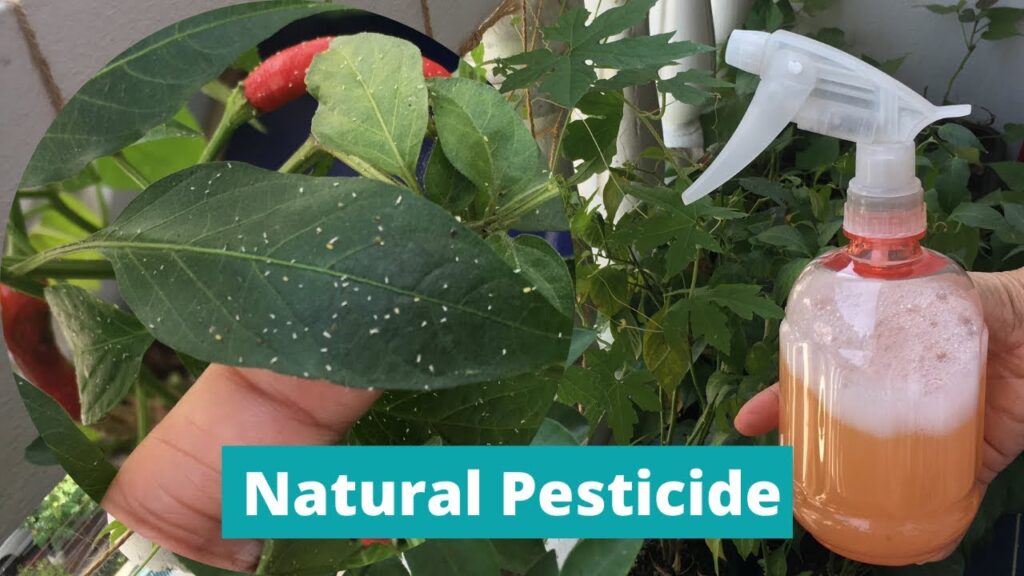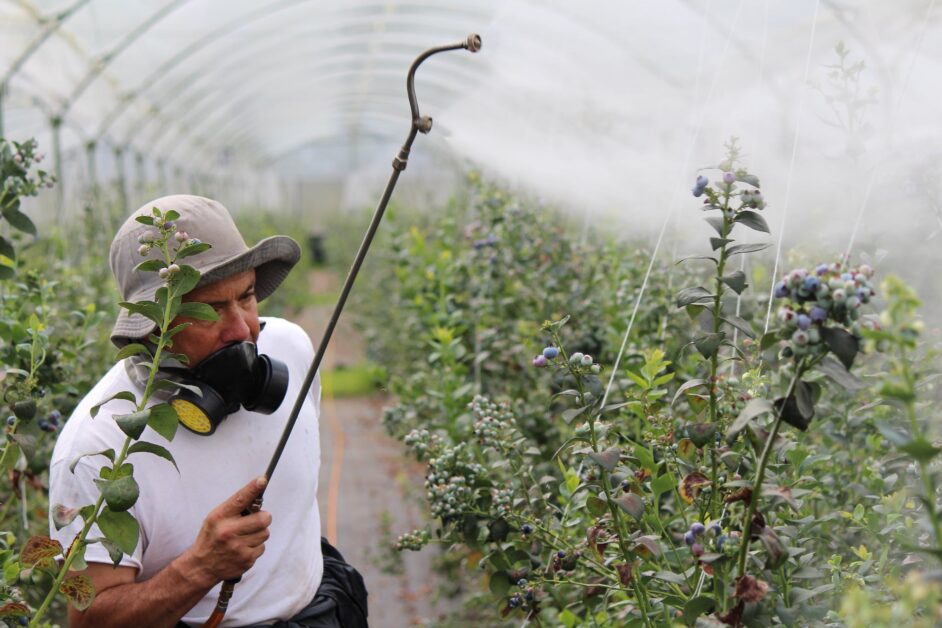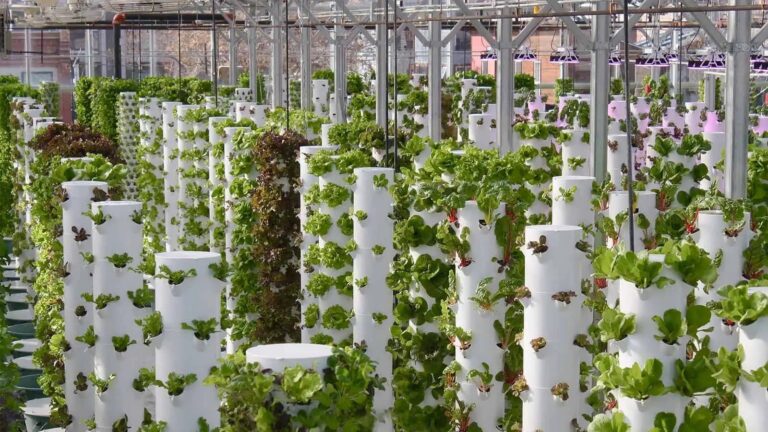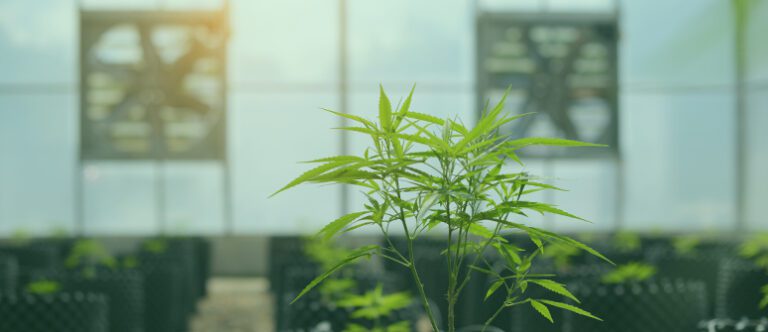Best Pesticides and Fungicides: How to Choose and Use the Right Products for Your Plants
Table of Contents
Understanding the Importance of Pesticides and Fungicides in Plant Care

Pesticides and fungicides play a vital role in plant care, ensuring the health and productivity of your plants. These chemical substances are specifically designed to combat pests and fungi, which can pose serious threats to the well-being and growth of your plants. By using pesticides and fungicides correctly and judiciously, you can protect your plants from destructive insects, harmful diseases, and invasive fungi.
One of the primary reasons why pesticides and fungicides are important in plant care is their ability to control pests. Insects such as aphids, caterpillars, and mites can rapidly damage your plants, consuming their leaves, stems, and flowers. Additionally, diseases caused by fungi, such as powdery mildew and blight, can weaken your plants’ immune systems and inhibit their growth. By utilizing pesticides and fungicides, you can effectively manage and eradicate these threats, preventing potential devastation and ensuring the overall health of your plants.
When it comes to selecting the right pesticides and fungicides for your plant care routine, it’s crucial to consider their efficacy, safety, and suitability for your specific plant species. Some products may be better suited for certain pests or diseases, while others may have specific application guidelines or restrictions. It’s important to carefully read and follow the instructions on the labels of these products, as incorrect usage can not only be ineffective but can also harm your plants or the environment. By understanding the importance of pesticides and fungicides in plant care and making informed choices, you can effectively protect and nurture your plants, enjoying healthy and thriving greenery.
Identifying Common Pest and Fungal Problems in Plants
One of the most important aspects of plant care is identifying and addressing pest and fungal problems. These issues can quickly devastate a plant if left untreated, so it’s crucial to be able to recognize the signs and take appropriate action. Common pest problems include aphids, mealybugs, and spider mites, while fungal issues can manifest as powdery mildew, black spot, or root rot.
When it comes to identifying pests, keep an eye out for physical damage to the plant, such as chewed leaves or holes. You may also notice the presence of small insects or their eggs on the plant or in the soil. Fungal problems, on the other hand, often exhibit visible symptoms like discolored or wilting leaves, powdery or fuzzy growth, or a foul smell. Take note of any changes in the plant’s appearance or behavior, as this can provide valuable clues to the problem at hand.
Once you’ve identified the pest or fungus affecting your plants, it’s important to act swiftly to prevent further damage. There are a variety of natural and chemical treatments available, each with its own benefits and considerations. Natural remedies, such as neem oil or insecticidal soap, can be effective against many pests, but may require repeated applications for complete eradication. Chemical pesticides and fungicides, on the other hand, offer more immediate results but may come with potential risks to beneficial insects and the environment. Consider the specific needs of your plants, the severity of the infestation, and your personal gardening philosophy when choosing the best course of action.
In the next section, we will explore the factors to consider when choosing pesticides and fungicides, including their effectiveness, target pests or fungi, and potential risks associated with their use. Stay tuned!
Factors to Consider When Choosing Pesticides and Fungicides
When it comes to choosing the right pesticides and fungicides for your plants, there are several factors to consider. Firstly, you’ll want to identify the specific pests or fungi that are causing problems in your garden. Different products are designed to target different types of pests and fungi, so it’s important to choose one that is specifically formulated to address the issue you are facing. Additionally, you’ll need to consider the type of plants you are treating. Some pesticides and fungicides may be harmful to certain varieties, so be sure to check the label and choose a product that is safe for use on your specific plants.
Another important factor to consider is the persistence of the pesticide or fungicide. Some products provide immediate results but have a limited residual effect, while others offer longer-lasting protection. If you’re dealing with an ongoing pest or fungal problem, you may want to opt for a product that provides extended control. On the other hand, if you’re looking for a quick-fix solution, a product with shorter persistence may be more suitable. It’s important to carefully read the labels and understand the recommended frequency of application for each product.
Different Types of Pesticides and Fungicides Available in the Market
When it comes to protecting your plants from pests and fungi, you’ll be glad to know that there is a wide range of pesticides and fungicides available in the market. These products are specifically designed to target and eliminate the various threats that can harm your plants and compromise their health.
One popular type of pesticide is insecticides. These are formulated to control and eradicate insects such as aphids, beetles, caterpillars, and mites, which can wreak havoc on your plants by eating away at their leaves, stems, and fruits. Insecticides come in different forms, including sprays, powders, and granules, and are typically applied directly onto the foliage or soil around the plant. Some insecticides have systemic properties, which means they are absorbed by the plant and provide long-lasting protection from insect infestations.
Another common type of pesticide is herbicides. As the name suggests, herbicides are used to control and kill unwanted weeds that can compete with your plants for nutrients, sunlight, and water. They work by inhibiting the growth and development of weeds and can be either selective or non-selective. Selective herbicides target specific types of weeds, while non-selective herbicides kill all vegetation they come into contact with. It’s important to carefully read the labels and instructions of herbicides to ensure that you are using the right product for your specific needs and to avoid inadvertently harming your desired plants.
Assessing the Environmental Impact of Pesticides and Fungicides

Pesticides and fungicides are essential tools in maintaining healthy plants and crops, but it is important to assess their environmental impact. These chemical solutions have the potential to harm not only the pests and fungi they target but also beneficial insects, birds, and other organisms in the surrounding ecosystem. Understanding and evaluating the environmental impact of these compounds is crucial to ensure the long-term sustainability of our agricultural practices.
One of the key factors to consider when assessing the environmental impact of pesticides and fungicides is their persistence in the environment. Some pesticides can linger in soil, water bodies, and even the air for extended periods, leading to potential runoff and contamination. This can have severe implications for nearby wildlife, aquatic organisms, and other plants. Additionally, these chemicals can accumulate in the food chain, posing risks to consumers at the top of the chain, such as humans and predators.
Another critical aspect to evaluate is the potential for non-target effects. Pesticides and fungicides are designed to target specific pests and diseases, but they can also impact other organisms unintentionally. Bees and other pollinators, for example, are vital to our food production, yet they can be harmed by the use of certain pesticides. Evaluating these unintended consequences and finding ways to minimize such risks is essential to strike a balance between effective pest and fungal control and preserving the health of the environment.
Reading and Decoding Pesticide and Fungicide Labels
When it comes to using pesticides and fungicides in our gardens and landscapes, it is crucial to read and decode the labels on these products. Understanding the information provided on the labels can help us make informed decisions about which products to use, how to apply them properly, and how to ensure our safety and the safety of our plants.
Pesticide and fungicide labels contain important details such as the active ingredients, usage instructions, safety precautions, and any warnings or restrictions. By carefully reading and decoding these labels, we can determine if a particular product is suitable for our specific needs and if it is safe to use on certain types of plants. It is also important to pay attention to any special instructions, such as recommended application rates or timing, as this information can greatly impact the effectiveness of the product.
Decoding pesticide and fungicide labels is not always straightforward, especially for those who are not familiar with the terminology used. However, many labels now include user-friendly instructions and diagrams to help simplify the process. If you come across any terms or phrases that you are unsure about, be sure to consult reputable sources or contact the product manufacturer for clarification. Remember, taking the time to read and understand the labels can save you time, money, and potential harm to your plants and yourself.
Selecting the Right Pesticides and Fungicides for Different Plant Types
When it comes to selecting the right pesticides and fungicides for different plant types, it’s important to consider a few key factors. First and foremost, you need to identify the specific pests or fungi that are causing problems in your plants. By correctly identifying the issue, you can then determine which pesticides or fungicides are most effective in targeting those particular pests or fungi.
Another important consideration is the type of plant you are dealing with. Different plants have different susceptibility to pests and fungi, and they may also have different sensitivities to certain pesticides or fungicides. It’s essential to choose products that are not only effective against the pests or fungi you are dealing with but also safe for the specific plant species you are trying to protect.
Additionally, take into account the stage of plant growth. Some pesticides and fungicides are safe to use on young plants but may be damaging to mature ones. Similarly, certain products are better suited for use during specific seasons or weather conditions. Understanding these nuances will help you select the most appropriate products for your plant’s current state and environmental situation.
Lastly, always read and follow the label instructions carefully. Pesticides and fungicides can be powerful chemicals, and using them incorrectly can lead to ineffective results or even harm to your plants or yourself. Follow the application rates, timing, and safety precautions provided on the label to ensure the best possible outcomes for your plants and the environment.
By considering the specific pest or fungal issue, the plant type, the growth stage, and following label instructions, you can confidently select the right pesticides and fungicides to effectively protect and care for your plants. Remember, if you are unsure about any aspect of pesticide or fungicide selection or usage, consult with a gardening expert or local agricultural extension for further guidance.
Understanding the Application Methods for Pesticides and Fungicides
When it comes to applying pesticides and fungicides, choosing the right method is crucial for effective plant protection. There are several application methods available, each with its own advantages and considerations. One common method is foliar spraying, where the pesticide or fungicide is applied directly to the leaves of the plant. This method is ideal for targeting pests and diseases that primarily affect the foliage. It allows for quick absorption by the plant and often provides fast results. However, it is important to ensure thorough coverage of the plant surface to maximize effectiveness.
Another commonly used method is soil drenching, which involves applying the pesticide or fungicide directly to the soil around the plant’s root zone. This method works well for systemic control, as the chemicals are absorbed by the roots and transported throughout the plant. Soil drenching is particularly effective for long-lasting protection against soil-borne pests and diseases. Care should be taken to avoid excessive application, as it can lead to chemical runoff and potential harm to the environment.
In addition to these methods, there are also granular formulations that can be spread around the base of plants to provide slow-release protection over time. This is especially useful for larger areas or when applying to multiple plants. However, it is important to follow the manufacturer’s instructions for proper placement and dosage to avoid damaging the plants or surrounding environment.
Regardless of the application method chosen, it is crucial to always follow the labeled instructions and safety precautions. Equipping yourself with protective clothing, such as gloves and goggles, is essential to protect yourself from direct contact with the chemicals. Timing is also an important consideration, as applying pesticides and fungicides during calm weather conditions can help minimize drift and maximize their effectiveness.
Understanding the application methods for pesticides and fungicides is crucial for efficient and effective plant care. By employing the appropriate method based on the target pest or disease, you can ensure the best possible outcomes for your plants. However, it is important to remember that pesticides and fungicides should always be used responsibly and in accordance with local regulations to protect both the environment and your own health.
Proper Storage and Handling of Pesticides and Fungicides
Proper storage and handling of pesticides and fungicides is essential to ensure their effectiveness and prevent any harm to yourself, others, and the environment. When it comes to storage, the first rule is to keep these chemicals in their original containers, as they are specifically designed to safely store and transport pesticides and fungicides. These containers are typically made of sturdy materials that can withstand the chemicals they hold, and they come with labels that provide important information about the contents, including safety precautions and instructions for use.
In addition to using the original containers, it is crucial to store pesticides and fungicides in a dedicated, well-ventilated area that is secure and inaccessible to children, pets, and unauthorized individuals. This area should be cool, dry, and away from direct sunlight to prevent degradation and maintain the potency of the chemicals. It is also recommended to have a locked cabinet or storage unit to further ensure their safety.
When it comes to handling these chemicals, it is crucial to wear appropriate personal protective equipment (PPE) such as gloves, goggles, and a mask to protect yourself from potential contact or inhalation of the chemicals. It is also important to carefully read and follow the instructions and safety guidelines provided on the product label. This includes using the recommended dosage, application method, and timings. Remember, more is not always better – using excessive amounts of pesticides or fungicides can lead to environmental pollution and unintended damage to your plants.
By following these guidelines, you can ensure the safe storage and handling of pesticides and fungicides, minimizing any potential harm while maximizing their effectiveness in protecting your plants from pests and fungal diseases.
Strategies for Effective Pest and Fungal Control in Gardens and Landscapes
When it comes to effective pest and fungal control in gardens and landscapes, there are several strategies that can help maintain healthy plants. One important aspect is practicing good sanitation and hygiene. This involves removing any dead or decaying plant material, as well as regularly cleaning and disinfecting gardening tools to prevent the spread of pests and diseases. Another strategy is to encourage biodiversity in your garden. By planting a variety of different plants, you can attract beneficial insects that act as natural predators against common pests. Additionally, maintaining proper spacing between plants and providing adequate airflow can help prevent the spread of fungal diseases.
Another key strategy is to regularly monitor your plants for signs of pests or fungal infections. This includes regularly inspecting leaves, stems, and fruits, and keeping a keen eye out for any unusual discoloration, spots, or wilting. By catching these problems early on, you can take swift action to prevent further damage. If you do notice pests or fungal infections, there are a variety of effective treatment options available. These can include the use of pesticides or fungicides, as well as organic alternatives such as neem oil or insecticidal soap. It’s important to carefully read and follow the instructions on the product labels, and to use protective gear when applying these substances.
Tips for Safe and Responsible Pesticide and Fungicide Use
Safe and responsible pesticide and fungicide use is essential for protecting our plants and minimizing harm to the environment. Here are some tips to ensure that you are using these products in the most effective and environmentally-friendly manner:
1. Read and follow the instructions: Before using any pesticide or fungicide, carefully read and follow the instructions provided on the product label. This will help you understand the recommended dosage, application method, and safety precautions. It is crucial to adhere to these guidelines to ensure that the product works effectively and does not cause any harm.
2. Store and handle with care: Pesticides and fungicides should always be stored in their original containers and in a secure and designated area, away from children, pets, and food products. Make sure to keep them out of direct sunlight and extreme temperatures. When handling these products, wear protective clothing, such as gloves and eyewear, to minimize the risk of exposure.
3. Use the correct dosage: Using the right amount of pesticide or fungicide is important for effective pest and disease control while minimizing the negative impact on the environment. Over-application can be harmful to plants, beneficial insects, and other organisms. Under-application, on the other hand, may not provide adequate protection. Always measure and mix the product according to the instructions to ensure the correct dosage.
4. Target the problem: It is important to accurately identify the pests or diseases affecting your plants before applying any pesticide or fungicide. Using a broad-spectrum product without specifically targeting the problem can harm beneficial insects and disrupt the natural balance in your garden. Choose a product that specifically targets the pests or diseases you are dealing with for more effective and targeted control.
By following these tips, you can ensure safe and responsible use of pesticides and fungicides in your gardening practices. This will help protect your plants, the environment, and ultimately, contribute to a healthier and more sustainable garden.
Integrated Pest Management: A Holistic Approach to Plant Health
Integrated Pest Management (IPM) is a comprehensive and sustainable approach to plant health that focuses on preventing and managing pests, diseases, and weeds while minimizing risks to the environment, human health, and beneficial organisms. Unlike conventional pest management methods that rely heavily on pesticides, IPM emphasizes the use of multiple strategies to control and suppress pests. By combining cultural, biological, physical, and chemical control methods, IPM aims to create an ecosystem that is less susceptible to pest infestations and diseases.
One key aspect of IPM is the implementation of cultural practices that promote plant health and prevent pest problems. Proper soil preparation, regular monitoring, and inspection of plants for signs of diseases and pests, adequate watering and fertilization, and maintaining appropriate planting densities are all important cultural practices that can help strengthen plants and make them less vulnerable to pests and diseases. Additionally, using pest-resistant plant varieties and practicing crop rotation can help disrupt pest lifecycles and reduce the buildup of pest populations.
Another important element of IPM is the use of biological controls, which involve the introduction of natural enemies such as predators, parasites, and pathogens to control pest populations. Beneficial insects like ladybugs, lacewings, and parasitic wasps can help keep pest populations in check by preying on pests or parasitizing their eggs or larvae. Likewise, microbial agents like Bacillus thuringiensis (Bt) and Trichoderma species can be utilized to control certain pests and diseases. These biological control methods are often preferred over chemical pesticides as they are effective, environmentally friendly, and target specific pests while causing minimal harm to non-target organisms.
By integrating these various management practices, IPM offers a more sustainable and long-term solution to plant health and pest control. However, it’s important to note that IPM requires continuous monitoring, regular inspections, and timely action to be effective. Additionally, the success of IPM can vary depending on factors such as the crop, the specific pest or disease, and environmental conditions. Therefore, it’s crucial for gardeners and cultivators to stay informed about the latest research and best practices in IPM and adjust their strategies accordingly.
Natural Alternatives to Synthetic Pesticides and Fungicides

Organic gardening has gained popularity in recent years, as more and more people are seeking natural alternatives to synthetic pesticides and fungicides. These eco-friendly alternatives not only promote the health and well-being of our plants, but also minimize the impact on the environment and our own health. So, what are some effective natural alternatives that can be used to control pests and fungal diseases in your garden?
One commonly used natural alternative is neem oil. Derived from the neem tree, neem oil is known for its excellent insecticidal properties. It works by disrupting the life cycle of pests, inhibiting their feeding and reproduction. Neem oil is effective against a wide range of common pests, including aphids, whiteflies, and mites. It is also beneficial in the control of fungal diseases, such as powdery mildew and black spot. To use neem oil, simply dilute it according to the instructions on the label and spray it directly onto the affected plants. It is important to note that neem oil should be used during cooler temperatures and avoided during the hottest parts of the day to prevent potential leaf damage.
Another natural alternative is insecticidal soap. Made from potassium salts of fatty acids, insecticidal soap works by suffocating and dehydrating pests, such as aphids, mealybugs, and spider mites. It is effective against soft-bodied insects and can be used on a wide variety of plants, including vegetables, fruit trees, and ornamentals. Insecticidal soap can be applied as a foliar spray, covering both the upper and lower surfaces of the leaves where pests are commonly found. It is important to apply insecticidal soap during early morning or late afternoon when temperatures are cool and to reapply every 7-10 days or after rainfall for effective control.
These are just a couple of examples of natural alternatives to synthetic pesticides and fungicides that can be used in your garden. By incorporating these eco-friendly options into your plant care routine, you can maintain a healthy garden while minimizing the impact on the environment. So, why not give these natural alternatives a try and take a step towards sustainable gardening practices?
Troubleshooting Common Issues and Challenges with Pesticide and Fungicide Use
When it comes to using pesticides and fungicides in plant care, there are several common issues and challenges that gardeners and plant enthusiasts may face. One of the most frequent problems is improper application, which can lead to ineffective pest or fungal control. Applying the wrong quantity or concentration of the product, using outdated or expired pesticides, or not following the recommended application method can all contribute to poor results. Additionally, some pests or fungi may develop resistance to certain pesticides over time, making them less effective in controlling infestations. It’s important to stay informed and up to date on the latest recommendations and techniques to ensure the best possible outcomes.
Another common challenge is identifying the specific pest or fungal issue affecting your plants. Sometimes, it can be difficult to determine the exact type of pest or fungus causing damage, especially if you are not familiar with common garden pests or diseases. This can make it challenging to choose the right pesticide or fungicide for effective control. However, there are resources available such as online guides, books, and local agricultural extension offices that can help you identify the problem and provide appropriate recommendations for treatment. In some cases, it may be necessary to consult with a professional or seek expert assistance to accurately diagnose and address the issue.
Resources and Further Reading for Pesticide and Fungicide Selection and Usage
Choosing the right pesticides and fungicides for your plants is crucial for their overall health and well-being. With so many options available in the market, it can be challenging to decide which products to use. Fortunately, there are several resources and further reading materials that can provide valuable guidance and information.
One of the best ways to find reliable resources is by consulting gardening experts and professionals. They have extensive knowledge and experience in dealing with pests and fungi in plants and can recommend the most effective products for your specific needs. Additionally, many agricultural universities and extension services offer online resources and publications that cover various aspects of pesticide and fungicide selection and usage.
Another valuable resource is peer-reviewed research papers and scientific journals. These publications provide in-depth studies on different pesticides and fungicides, their mode of action, effectiveness, and potential side effects. They can help you make an informed decision based on scientific evidence and data. Additionally, government agencies, such as the Environmental Protection Agency (EPA), provide comprehensive information on registered pesticides and fungicides, including safety precautions, usage guidelines, and environmental impact.
By utilizing these resources and further reading materials, you can equip yourself with the knowledge and information needed to make informed decisions when selecting and using pesticides and fungicides. Remember to always follow label instructions and consider the specific needs of your plants to ensure their optimal health and protection against pests and fungal diseases. Seek advice from experts, stay updated with the latest research, and prioritize environmentally friendly solutions for a thriving garden or landscape.
How do pesticides and fungicides help in plant care?
Pesticides and fungicides help protect plants from pests and fungal diseases, preventing damage and promoting healthy growth.
What are some common signs of pest and fungal problems in plants?
Common signs include wilting, yellowing leaves, spots or lesions, holes in leaves, and the presence of insects or pests on the plant.
What factors should I consider when choosing pesticides and fungicides?
Factors to consider include the specific pest or disease you are targeting, the type of plant you are treating, application methods, safety precautions, and environmental impact.
What are the different types of pesticides and fungicides available in the market?
Common types include insecticides, herbicides, fungicides, bactericides, and nematicides, each designed to target specific pests or diseases.
How can I assess the environmental impact of pesticides and fungicides?
Look for products with low toxicity to non-target organisms, consider their persistence in the environment, and follow proper application guidelines to minimize environmental impact.
How can I read and understand pesticide and fungicide labels?
Labels provide important information about the product’s ingredients, application rates, safety precautions, and storage instructions. Carefully read and follow all instructions.
How do I select the right pesticides and fungicides for different types of plants?
Consider the specific pests or diseases affecting your plants, as well as the plant species, to choose products that are effective and safe for your particular plants.
What are the different application methods for pesticides and fungicides?
Application methods include spraying, dusting, drenching, and applying granules or pellets. The choice of method depends on the product and the plant’s needs.
How should I store and handle pesticides and fungicides properly?
Store them in a cool, dry place away from children, pets, and food. Follow the manufacturer’s guidelines for disposal and always use protective gear when handling these chemicals.
What strategies can I use for effective pest and fungal control in gardens and landscapes?
Integrated pest management (IPM) techniques, such as using biological controls, practicing good sanitation, and rotating pesticides, can help effectively manage pests and diseases.
What are some tips for safe and responsible pesticide and fungicide use?
Always follow label instructions, avoid overuse, wear protective clothing and equipment, and apply chemicals during calm weather to prevent drift and minimize health risks.
Are there natural alternatives to synthetic pesticides and fungicides?
Yes, there are natural alternatives such as neem oil, garlic spray, and insecticidal soaps that can be effective against pests and diseases while being less harmful to the environment.
What are some common issues and challenges that may arise with pesticide and fungicide use?
Issues can include resistance in pests or diseases, damage to beneficial organisms, and potential harm to human health or the environment. Regular monitoring and adjusting strategies can help overcome these challenges.

Suyash Dhoot, editor at SouthElMonteHydroponics.com, is a pioneering force in hydroponics. His expertise spans nutrient solutions and cutting-edge technology. Through meticulous editing, he elevates the site to a beacon of knowledge, offering invaluable insights. Dhoot’s dedication shapes a greener, more efficient future for agriculture.



